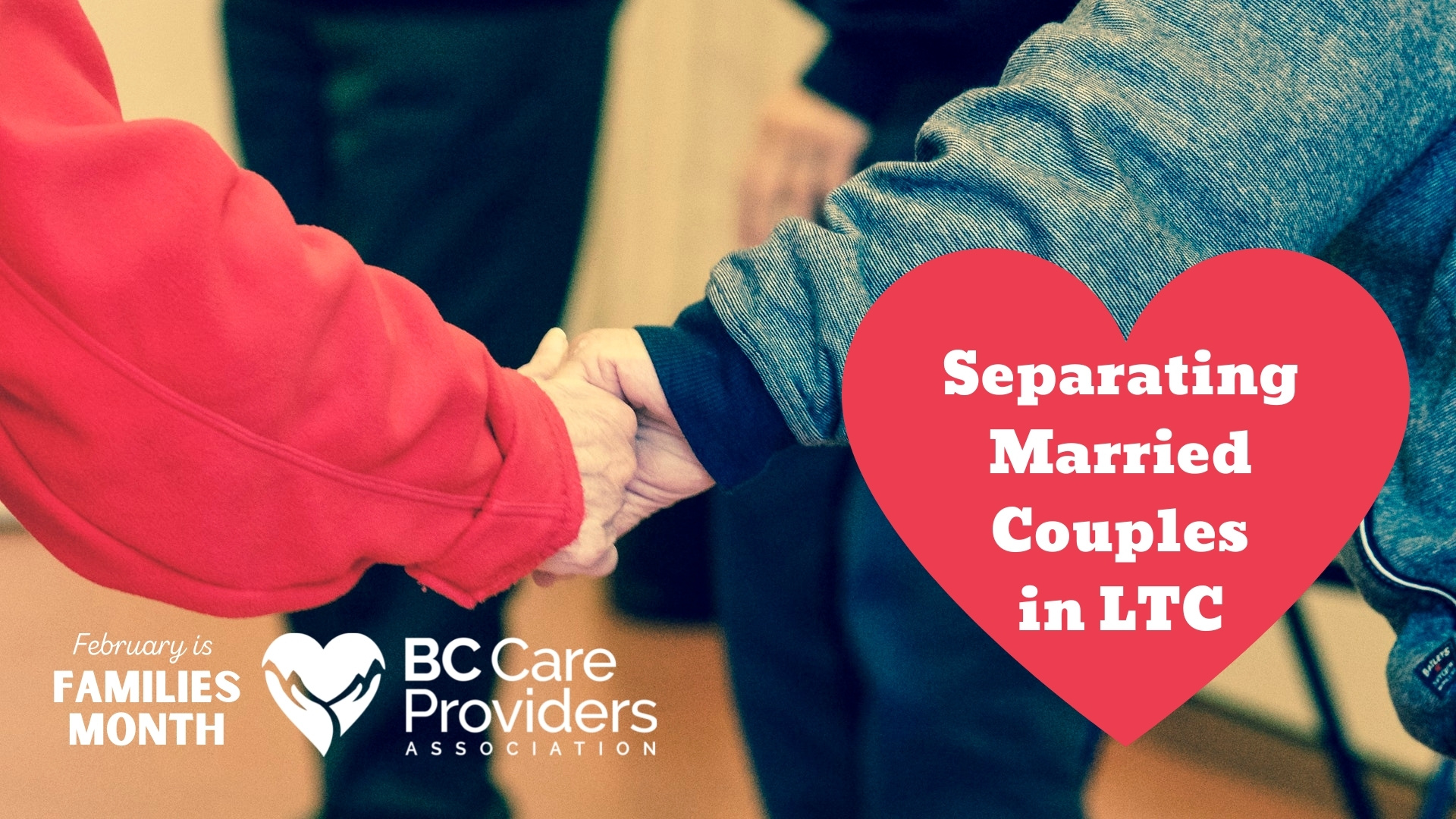SFU Masters graduate Lindsay Grasso on her study of what occurs when one spouse in LTC has dementia
The subject of married couples in long-term care has prompted controversy over the years, partly because of the level of public understanding about what long-term care is, and how dementia changes behaviours.

In the summer of 2016, the story of the separation of B.C. couple Wolf and Anita Gottschalk went viral, triggering international outcry. The couple’s granddaughter Ashley Bartyik posted an image on social media that she describe as ‘The Saddest Photo Ever Taken.’ Some weeks later steps were taken to reunite the couple. Bartyik was invited to participate in our first BC Continuing Care Collaborative.
SFU Masters of Gerontology Lindsay Grasso has done her own ‘deep dive’ on the subject of couples separated in LTC. Her thesis is titled ‘Till long-term care do we part’: Exploring the impacts of separating married couples on couplehood and well-being. As part of our #FamiliesMonth theme we are presenting a 2-part feature on Grasso’s research on how to maintain a sense of couplehood within the socio-physical environment of long-term care and its impacts on each spouse’s health and wellbeing.
Part One: The Separation of Married Couples in LTC Settings
Canada’s changing demographics mean that more married couples will live to share the experience of old age than ever before 1,2. In light of this demographic shift, it is estimated that more older couples will experience a caregiving relationship in which one spouse faces health declines such as dementia. Dementia is a leading factor in long-term care (LTC) relocation since progression impacts an individual’s ability to function independently 3. It is reported that 69% of residents in LTC had a form of dementia in 2016 4. Although married couples are currently a minority within these settings, researchers predict an increase in the commonality of couples relocating to LTC settings together due to predicted trends associated with aging and considering the intensity of caregiving duties on aging spousal caregivers5.

Research indicates that couples who collectively relocate to LTC do so because of a strong desire to maintain their relationship and to honour their marital commitments to stay together1,6. Keeping in mind, that while the needs of one spouse may primarily drive the decision to relocate, both spouses are often united in the decision due to their desires to stay together 1,6. However, institutional practices in B.C. invoke the separation of married couples in LTC settings in cases where the care needs of spouses differ. A prime example of this is when one spouse is living with dementia. In most cases, the spouse with dementia will reside in LTC, while the other spouse resides in assisted living (AL) or independent living (IL). While this issue is recognized as problematic and challenging, and has gained media attention over several years, the critical evaluation of the practice of separating dementia-affected dyads in these settings has been widely overlooked in research.
As part of the fulfillment of my Masters in Gerontology at Simon Fraser University, I conducted a literature review, under the supervision of Dr. Barbara Mitchell, to understand the impacts of separation on dementia-affected dyads. Specifically, the challenges couples may face in preserving their desired relationship quality and couplehood. It has been found that despite the multiple emotional losses associated with dementia, some couples are able to maintain a sense of relationship and a strong sense of commitment. Couples with a stronger sense of couplehood view dementia as a shared experience rather than solely affecting one partner, with one spouse’s health and well-being directly impacting the other3.
The review identified the following themes: a) Impact of Physical Separation on Relationship and Health/Well-being, b) Significance and Meaning of Visiting, c) Social Atmosphere and Relationships, and d) Physical Environment. The themes revealed the complex emotional experience connected with involuntary separation and perceptiveness into the culture of care that impacts couples’ abilities to sustain their relationship post-relocation. Ultimately, having a better understanding of couple’s situations within LTC is vital to help guide future research, develop supportive interventions, and evaluate current policies.
Click here to find a copy of ‘Till long-term care do we part’: Exploring the impacts of separating married couples on couplehood and well-being.
**
Lindsay Grasso is a graduate of the Masters of Gerontology program at Simon Fraser University. Grasso is studying the separation of married couples in long-term care. The experience of her great aunt and uncle, who became involuntarily separated as a result of her great uncle’s advancing dementia, inspired her to explore this area.
In Part Two we will learn more on this study in a Q&A with Lindsay Grasso.





